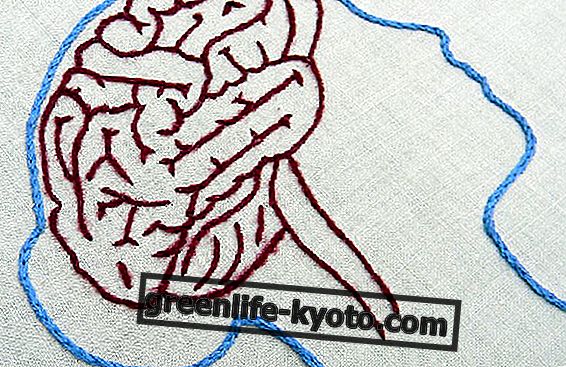
The concept of plasticity of the central nervous system is an acquisition that comes to us from discoveries in the neuro-psychiatric field and in whose center the lord of organs finds space: the brain.
In our traditional scientific model, the encephalon was considered a perennial tissue, so once growth was completed, the relationships between the parts that constituted it were given once and for all.
In fact, studies at the turn of the century have shown that the anatomical structure (ie the relationship between the parts) is variable due to the presence of at least three phenomena:
- Ability to change relationships in a reversible way, by the cells in order to respond to different stimuli;
- Capacity of formation of new neuronal connections, (synapses) which modify the brain map of an area;
- Ability to form new neurons and glial cells (neurogenesis).
With reference to point 3, at the end of the century the first scientific demonstration arrived that even the brain of an adult is plastic, even capable of neurogenesis in a critical area for memory and closely connected to the hippocampus: "the entorhinal cortex .
In 2001 the reason for neurogenesis was discovered thanks to a group of neurobiologists from NEW JERSEY, led by TRACEY Y. SHORS and ELIZABETH GOULD .
The two researchers through studies conducted on mice, have shown that the newly formed neurons integrate into the hippocampal circuits and that their presence is essential for the fixation of new information, new memories, new memory traces.
In experiments always on animals we have seen that those kept in environments rich in sensory and motor stimuli, have a thicker cortex and a higher number of neuromediators.
So much so that the repercussions of stress on the learning and memory process has become proven scientific acquisition.
These intellectual functions are intimately linked to external stimuli, which are capable of inducing a change in the structure of the mind and by this means the architecture of the neocortex itself.
The brain therefore changes and shapes itself in response to environmental stimuli.
Studies on mice have led to studies on men.
The brains of elderly taxi drivers
In 2000 ELEANOR A. MAGUIRE and colleagues from the University of London subjected a group of London taxi drivers to magnetic resonance.
For business needs, taxi drivers develop considerable spatial memory capacities to which the right rear hippocampus corresponds topographically.
Magnetic resonance imaging found that the right hippocampal area of older taxi drivers was generally larger than the younger ones, suggesting that the use of the function and size of the brain area is repeatedly activated.
Since 1995, thanks to a study on humans, it has been shown that the repetition of a rapid movement exercise with the fingers, carried out for about four weeks, causes a widening of the primary motor cortical area, in charge of organizing the movement of the fingers.
Once again, MRI showed that for months the enlargement of the cortical motor area persisted until the exercise could be recalled.
This means that the exercise had created new circuits.
Further studies confirm this data.
CHRISTIAN GASER neurologist of HARVARD MEDICAL SCHOOL BOSTON and GOTTFRIEND SCHLAUNG, PSYCHOLOGIST of the UNIVERSITY of JENA Germany, studied the brains of professional pianists with respect to a group of non-professional musicians and non-musicians.
Results of the study: professional pianists were found to have much more developed motor, auditory and visual-spatial areas than the two control groups.
The normal adult brain is continuously able to reshape itself on the basis of experiences, forming new synaptic circuits or restructuring existing ones.
Even Sonia Lupien of the stress research laboratory at McGill University in Canada and other researchers, examining ninety-two people for fifteen years, discovered that the brain volume of those with low self-esteem was up to a fifth lower than people who showed sufficient or good self-esteem. Furthermore, the performance of the first group, in terms of memory or learning capacity, was worse.
Lupien herself claims that: "brain atrophy is not irreversible. Studies conducted on humans and animals prove that by enriching the living environment with stimuli, the mental structure returns to normal levels. An improvement in the quality of life therefore translates into a recovery and normalization of brain functions ".
The same LUPIEN conducted a study on elderly people between 60 and 87 years, monitoring them for some years.
The brilliant researcher has discovered that in the event of a moderate increase in cortisol, damage to the hippocampus can be prevented with a drug that reduces the synthesis of the hormone. However, the drug does not work in people who have had high cortisol levels for some time.
The researcher observed that to counter dementia it is necessary to intervene in the central period of people's lives, precisely to regulate the excessive production of the stress hormone.
This study enters the research line that began as early as the mid-1980s, when some scientists, including ROBERT SALPOLSKY and BRUCE MC EWEN, discovered that stress causes damage to the hippocampus in the macaque and SAPLOSKY, a neurobiologist with anthropological formation, hypothesized that it was cortisol, produced under stress, to damage this cerebral area fundamental for memory.
Other studies confirmed this hypothesis and definitively in 1997, the researcher ELIZABETH GOULD, an expert in the study of neurogenesis, provided the first demonstration that stress causes the blocking of stem cell production in the adult hippocampus.
This can be achieved, even without medication, by learning to keep stress under control.
A new model therefore emerges from the studies conducted on the brain that sees it:
- plastic organ, in the sense that the experience is capable of modifying brain connections,
- organ that, at least in some areas, is capable of reproducing (neurogenesis),
- there is no rigid separation between emotions and cognition, rather the normal modes of brain functioning, provides a strong intertwining of emotions, memories, unconscious memories and consciousness,
- mind communication - brain - rest of the body is integrated and is influenced by lifestyles, age, natural and social environment.
In conclusion, I would like to focus on a reflection; from the aforementioned studies we can see the need to change lifestyle, which in turn translates into changing the way of thinking. This turns out to be decisive in the third age phase .
Studies and research support this thesis and invite the elderly to become responsible and curator of their health through simple and daily operations. Not least, as it has been exposed, to intervene on all those personal and character factors to turn direction and give a sense of fullness to one's existence, even in the phase of the third age.











